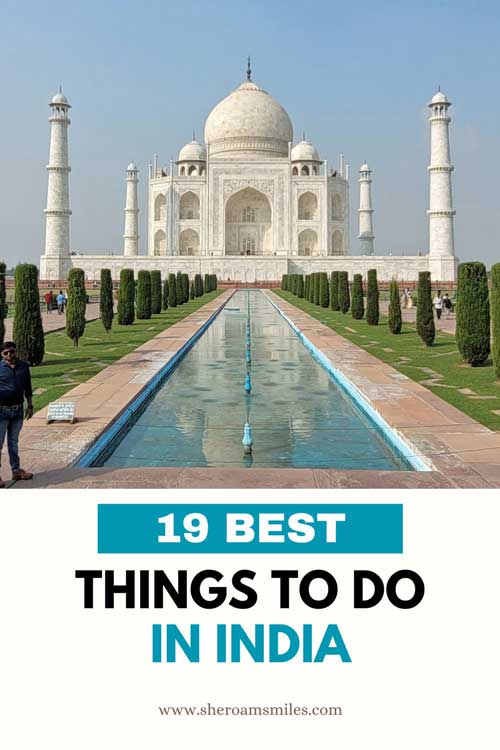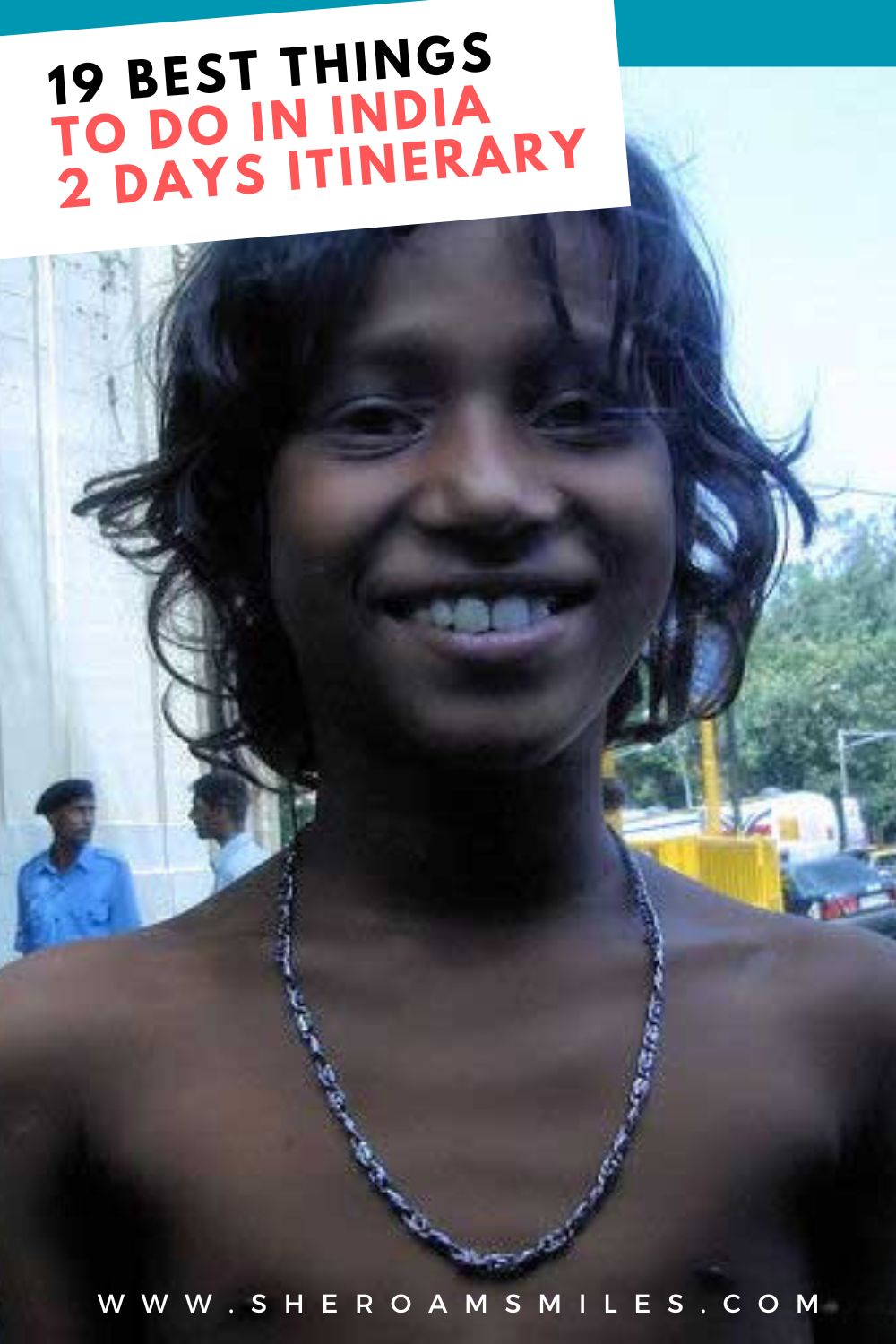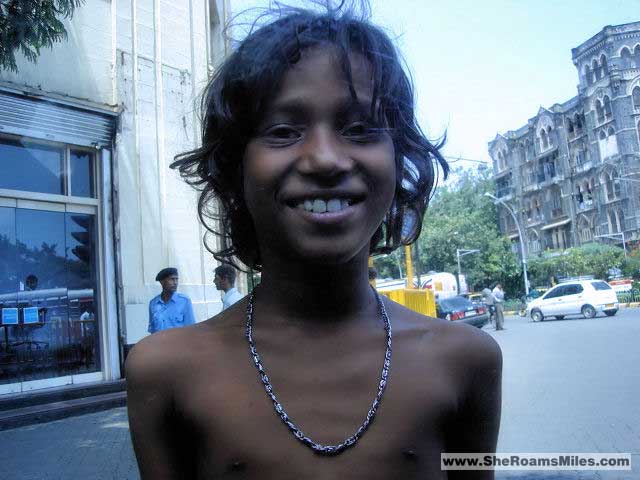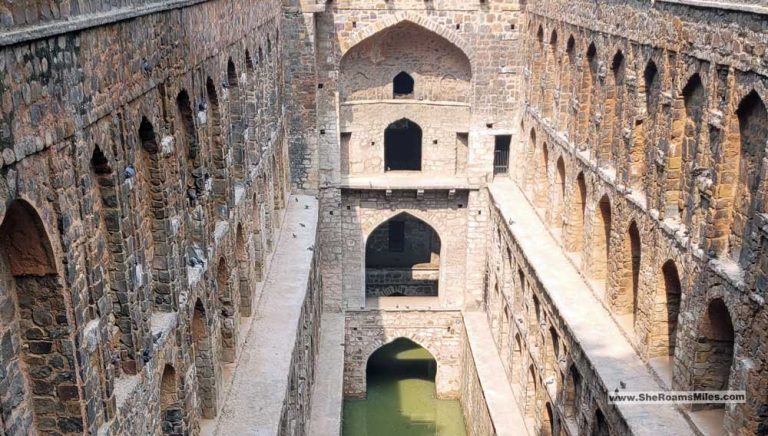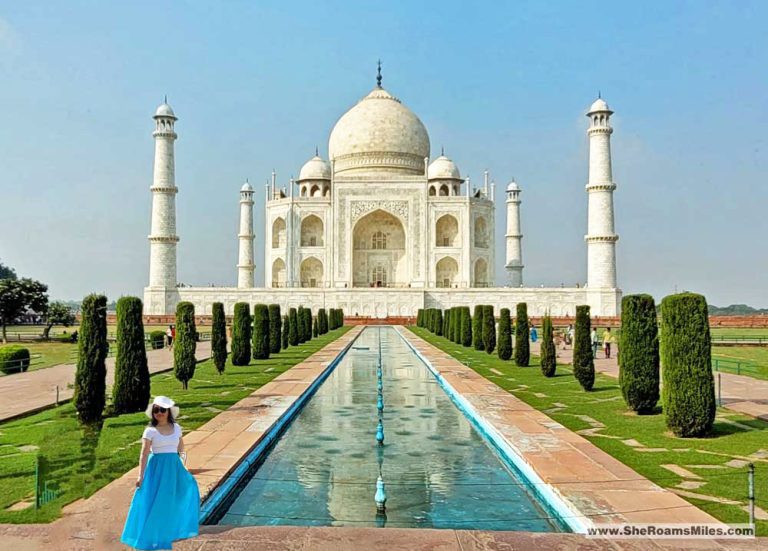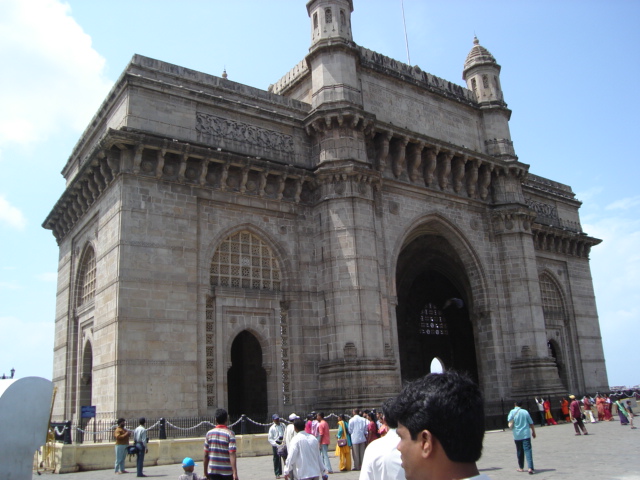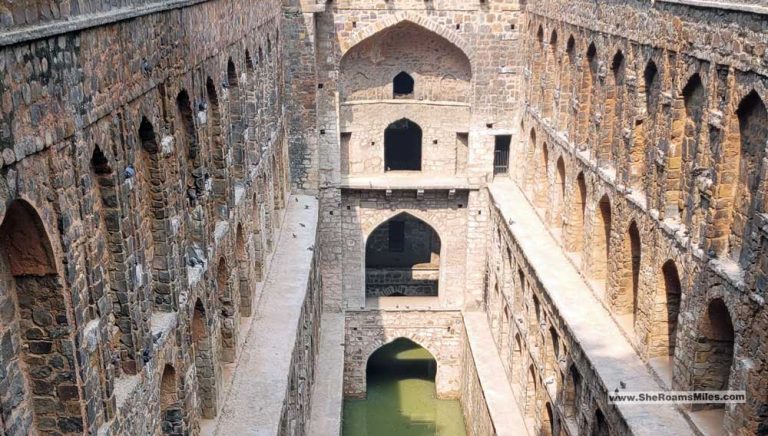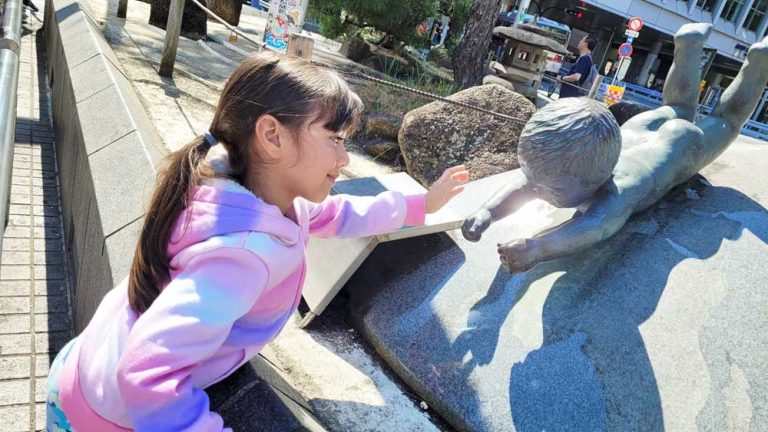19 Best Things to Do in India | Ultimate 2 Days Itinerary
What if I told you that you could experience the rich and vibrant culture and the best things to do in India in 2 days?
Welcome to the land of spices, colors, and diversity – India. A nation that never fails to mesmerize and leave its visitors enchanted. With a history spanning over 5,000 years, India is a melting pot of cultures, religions, and traditions. From bustling cities to serene countryside, India has something for everyone. And here’s the best part – you don’t need weeks or even days to experience it all. What if I told you that you could soak in the essence of India in just 2 days? Yes, you read it right.
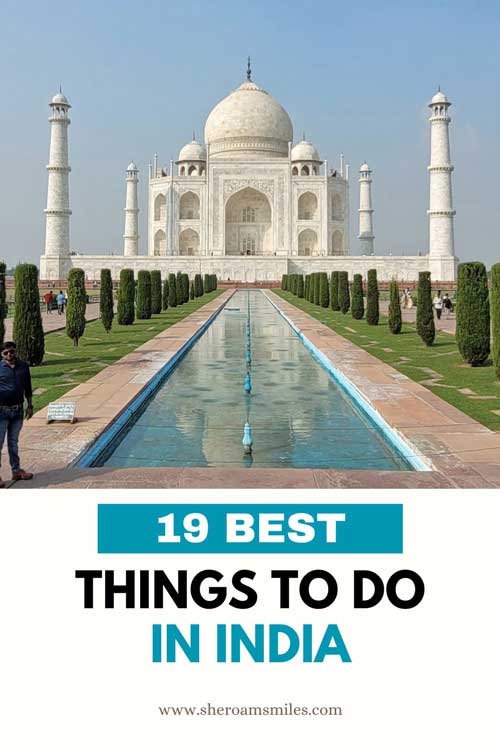
In this post, we will take you on a journey through India, packed with enriching experiences, vibrant sights, and delicious flavors. We will delve deeper into the unique aspects of India that make it such a beloved and intriguing destination. We will also provide useful information and tips on your trip to India. So get ready to discover the top things to do in India and make the most out of your 48-hour adventure through incredible India.
Incredible India
India, with its vibrant culture, rich history, and diverse landscapes, has long been a sought-after destination for travelers. From bustling cities to serene hill stations, from ancient temples to modern skyscrapers, there is something for everyone in this vast and diverse country. The majestic Taj Mahal, a symbol of undying love, is just one of the many architectural wonders that attract visitors from all corners of the globe. But beyond the surface-level attractions, the things to do in India also offer a deep and fascinating cultural experience that can leave a lasting impact on any visitor.
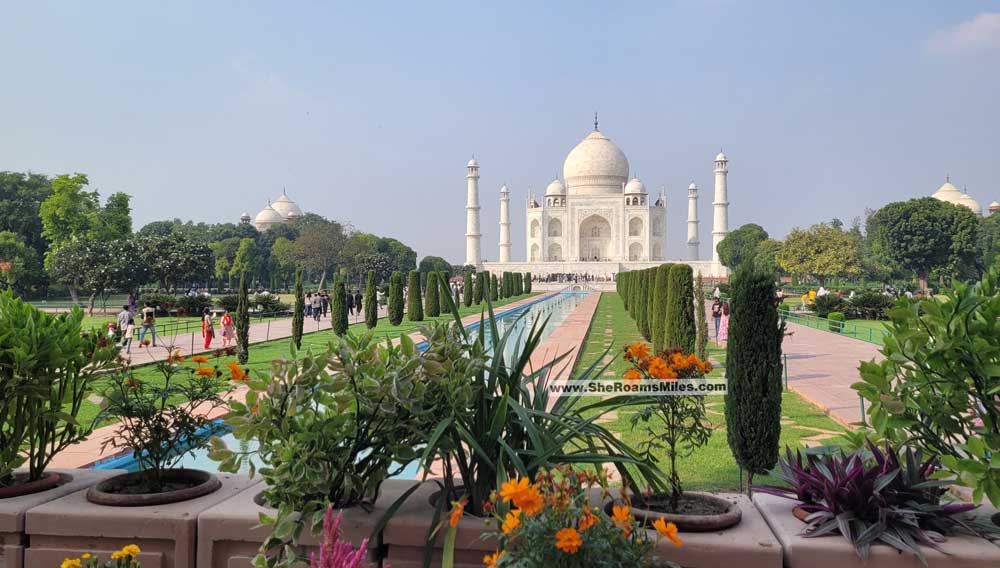
Things to Do in India in Just 2 Days
So many things to do in India are possible to see in 48 hours, and we will share how we swung it and show you our exact itinerary. We followed this itinerary, and because of our planning ahead, we were able to prioritize must-see attractions and activities, control our budget, and coordinate transportation and accommodations without feeling rushed. Most of all, having a well-thought-out plan reduced travel-related stress, allowing us to relax and enjoy our trip more fully.
Now, let’s be honest, planning a trip to India in 48 hours is like trying to fit an elephant into a suitcase. But with our guide, you’ll be able to see the highlights without feeling like you’re in a Bollywood action movie. Hope this guide will leave you fulfilled from your trip.
While it’s doable to explore on your own, there is a big advantage of utilizing travel agencies, or tour guides, which are very affordable in India. In this way, you will have an air conditioned car, a local driver who knows the ins and outs of transportation, and a tour guide for really relatively cheap.
Here are the top tour booking resources in India that I recommend:
- GetYourGuide: specializes in travel activities, tours, and excursions.
- Viator: specializes in tours, activities, and travel experiences around the world.
For a 2-day adventure in India, you can explore several key areas and regions that offer a rich blend of culture, history, and natural beauty (e.g., Golden Triangle, Kerala, Goa, etc.). On this itinerary, we will focus on Agra and New Delhi.
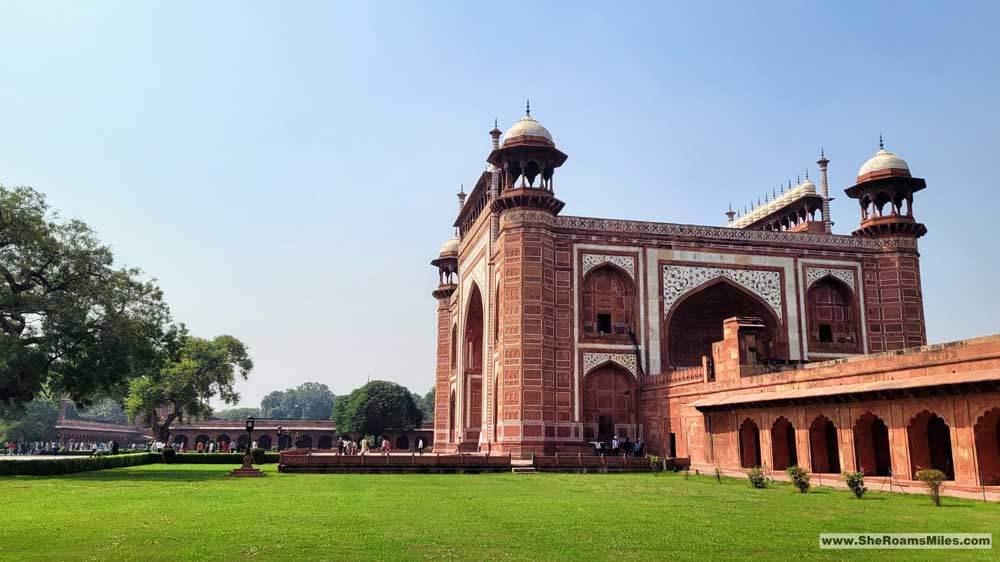
Overview of Your India Tour Itinerary
This trip to India starts and ends in Delhi. The itinerary is split between visiting the most interesting attraction in the country and exploring the city of Delhi with emphasis of Old and New Delhi, the culture, and their top even hidden attractions.
Think of it as a whirlwind tour where you get to experience the best of both worlds: the ancient charm of Old Delhi and the modern hustle of New Delhi. It’s like time traveling without the need for a DeLorean! 🚗💨
Below is a breakdown of where you will spend your days and nights.
Breakdown of your 2 days in India
- Day 0: Arrive in Delhi at night
- Day 1: Explore the vibrant city of Agra
- Day 2 Daytime: Explore Old and New Delhi
- Day 2 Nighttime: Fly out of Delhi
Map of your 2 days in India
How to use this map: This map is fully interactive, so you can move around, zoom in/zoom out, and click on the icons. If you want to see a larger map, click on the bracket in the upper right corner. To see more details and the different layers, click on the tab in the upper left corner.
The Ultimate India Tour Itinerary for 2 Days
Day 0: Arrive in Delhi
Depending on your international airline, you might arrive in Indira Gandhi International Airport (DEL) in the evening or late at night. If this is the case, you can just go straight and check in at your accommodation or hotel. It is important to know your hotel’s policy regarding airport pickup. Our hotel picks up clients 24 hours a day, however, they do charge for the service. If this is important for you, consider this when booking your hotel. Granted, you can also do rideshare {Uber, Lyft} in Delhi, but the surcharge and convenience are about the same. Just remember, if you choose rideshare, you might end up in a car with a driver who thinks he’s auditioning for “Fast & Furious: Delhi Drift.” Buckle up and enjoy the ride! 😄
As you will be based in Delhi, I recommend that you stay centrally or close to the airport if possible. Traffic in Delhi is a big thing, and it will save you so much time and stress if you are closer to the airport. The great news is that you will not need to worry about parking!
Where to stay in New Delhi
Delhi offers various accommodations to suit different preferences and budgets. Below you can find my picks for where to stay in New Delhi.
- Luxury: The Leela Palace New Delhi
- Mid-range: The LaLiT New Delhi
- Budget: Saltstayz Le Icon
Day 1: Agra
You will start your tour in India in the largest city, Delhi. You will not need a car because the tour company will provide the car, driver, and guide for you. We used the tour below. From Delhi, they will pick you from your hotel and drive you to Agra and back. It is a travel win-win. See a detailed Agra 1 Day itinerary here.
The distance from Delhi to Agra is approximately 210 kilometers (130 miles) by road, and typically takes around 3 to 4 hours by car, depending on traffic and the route taken. The most popular route is via the Yamuna Expressway, one of India’s best roads, which offers a smooth and fast drive.
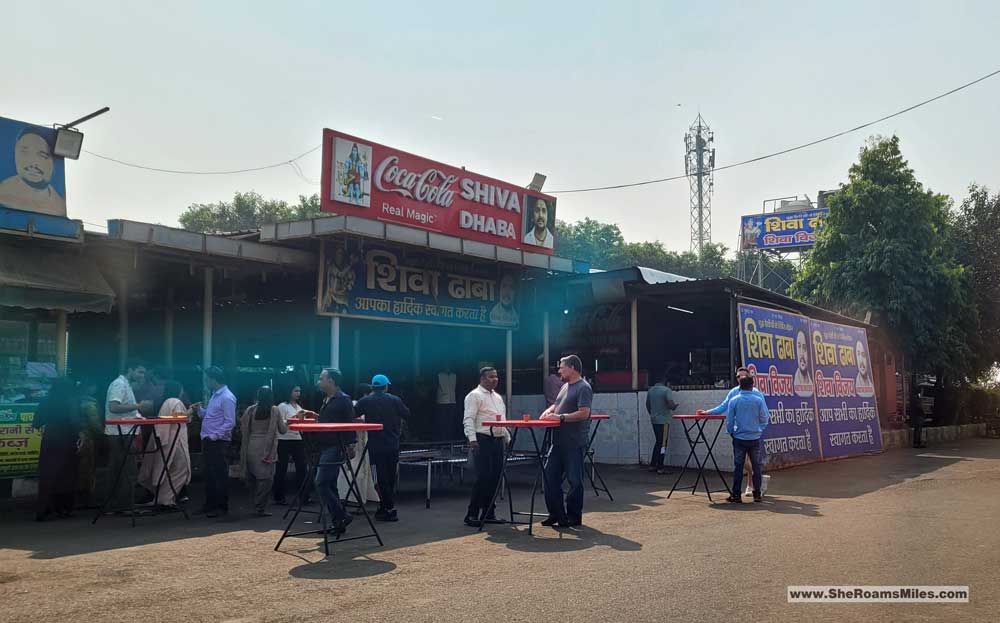
Along the drive you can stop by some famous local shops specializing in hot chai tea in a tiny one-use clay cup. Chai, simply meaning “tea” in Hindi, is an integral part of daily life in India. This favorite beverage is typically made by brewing strong black tea with a mixture of water, milk, sugar, and a blend of aromatic spices, creating what is known as masala chai. It is a must try.
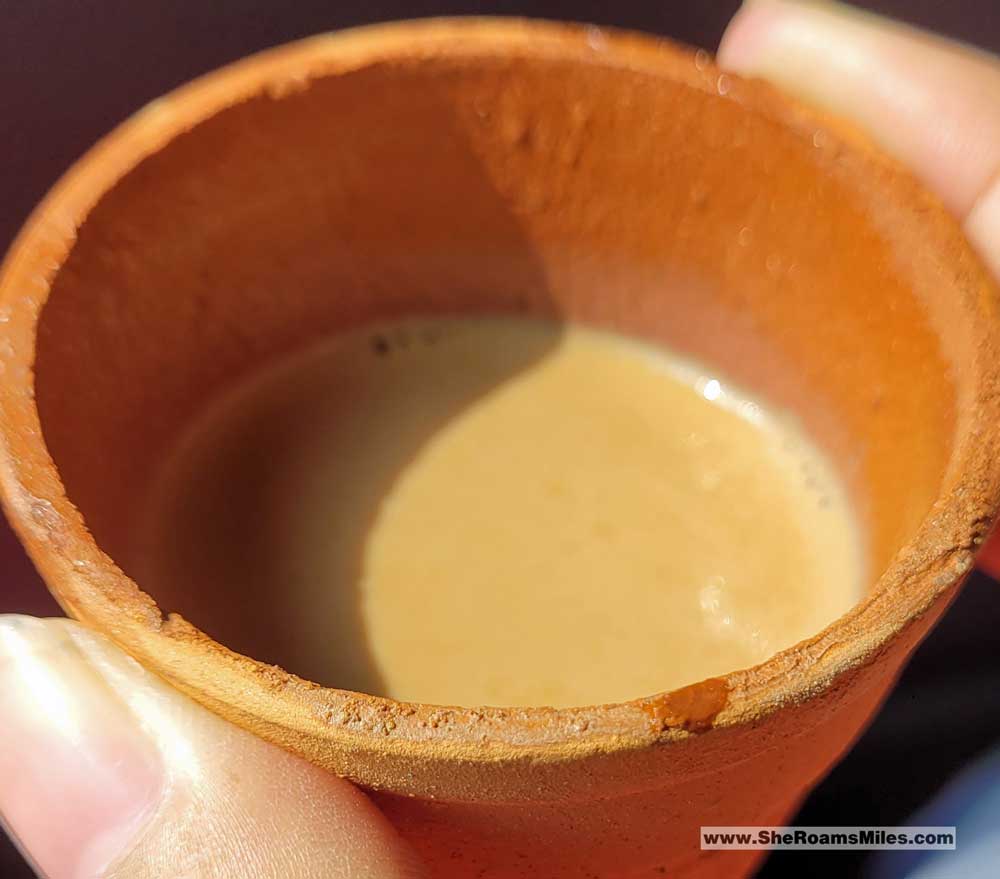
Our driver was a very polite guy. He told us to let him know if we want anything, bathroom breaks, etc., and he’ll accommodate us. For him we are his guests, and his guests are like his god. So there’s that!
Best things to do in Agra
Agra, a city steeped in history and culture, offers several must-do experiences and must-see attractions that showcase its rich Mughal heritage.
Please see our blog post for an in-depth guide to Explore the Best of Agra India | Perfect 1 Day Itinerary
1. Tuk-tuk Ride
Taking a tuk-tuk ride in Agra is a fantastic way to explore the city’s vibrant streets and iconic landmarks. Tuk-tuks, also known as auto-rickshaws, offer a unique and immersive experience, allowing you to navigate through narrow lanes and bustling markets with ease.
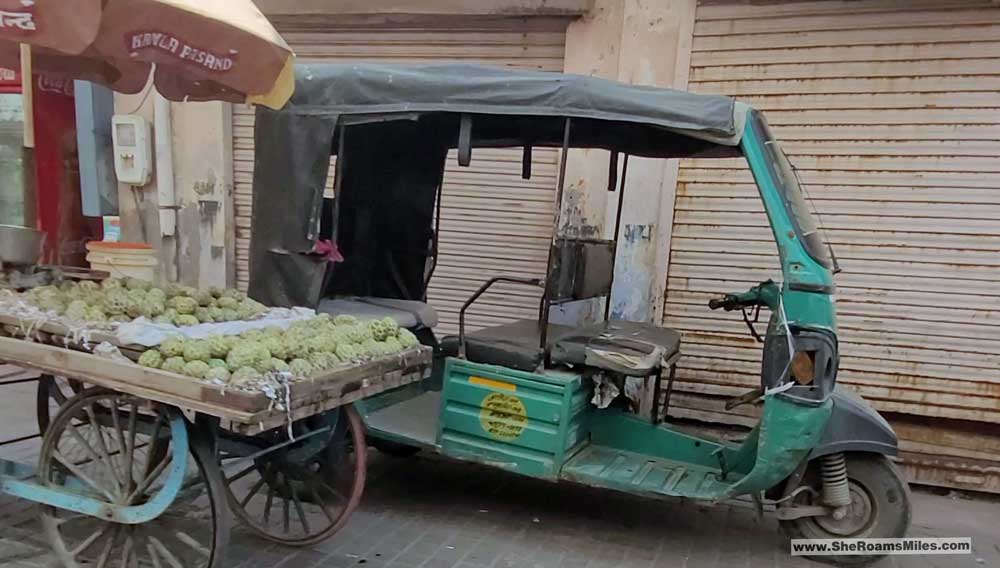
2. Taj Mahal
The Taj Mahal is a renowned ivory-white marble mausoleum in Agra, India. Recognized as a UNESCO World Heritage site in 1983, the Taj Mahal continues to attract millions of visitors every year, drawn by its timeless beauty and historical significance. It is undoubtedly one of the top things to do in India.
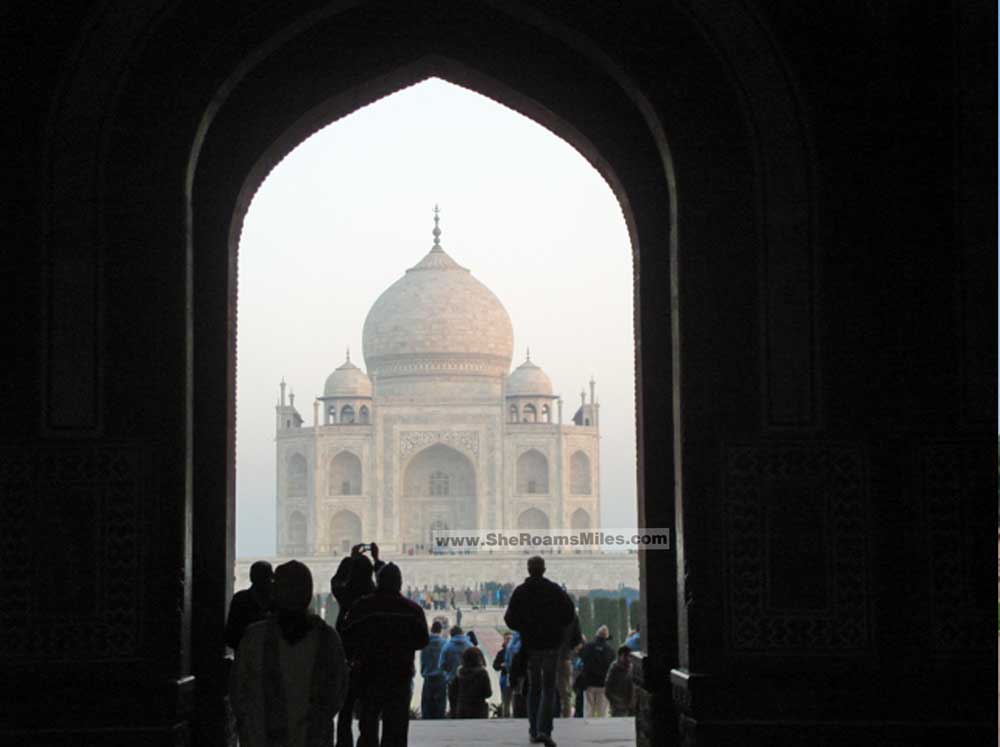
The Taj Mahal has three main entry gates: the West Gate, the East Gate, and the South Gate. Each gate offers a different perspective and experience of entering the Taj Mahal complex.
- The West Gate provides a grand approach. This is the main entrance and typically the busiest.
- The East Gate offers convenience. This gate is generally less crowded and is recommended for tourists who want to avoid long queues.
- And the South Gate was closed for entry in 2018 for security reasons but can still be used as an exit
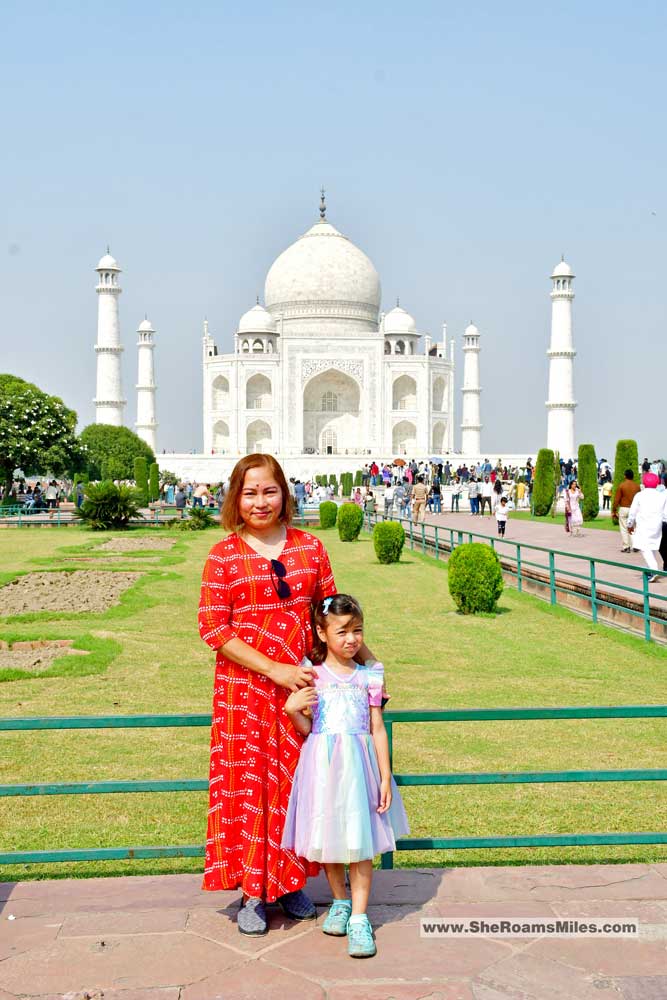
Recognized as a UNESCO World Heritage site in 1983, the Taj Mahal continues to attract millions of visitors every year, drawn by its timeless beauty and historical significance.
Yes, the Taj Mahal is considered one of the New Seven Wonders of the World. It was declared a winner in the New7Wonders of the World initiative in 2007. This recognition highlights its architectural beauty and cultural significance, making it one of the most iconic monuments globally.
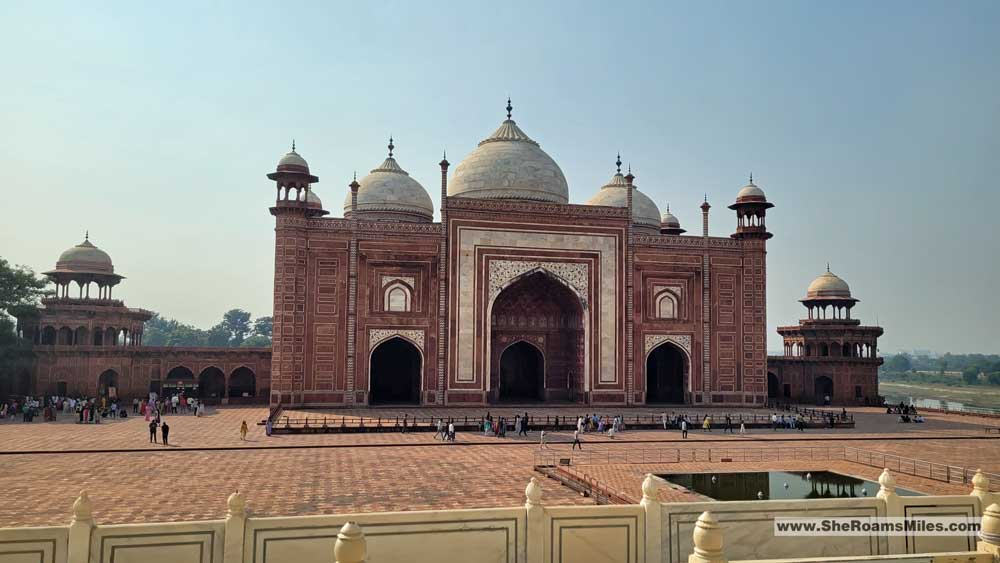
3. Lunch
Following the captivating tour of the Taj Mahal, your guide will take you to enjoy a delicious meal, with options from 5-star venues to local favorites, enhancing your experience of things to do in India.
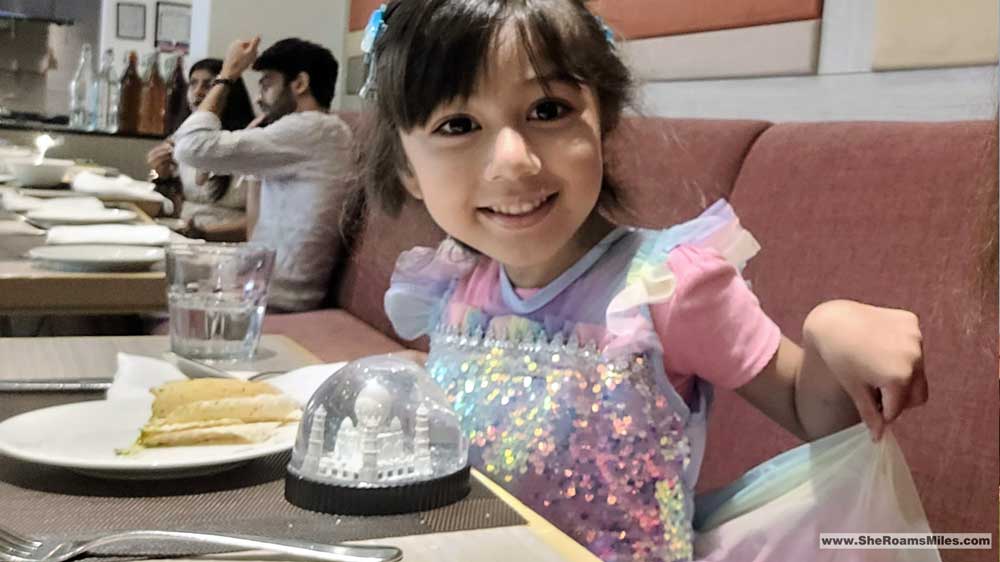
4. Stone Inlay Shops
Agra is renowned for its exquisite marble inlay work. Visiting these shops allows you to witness and purchase intricate art, a perfect addition to your list of things to do in India.
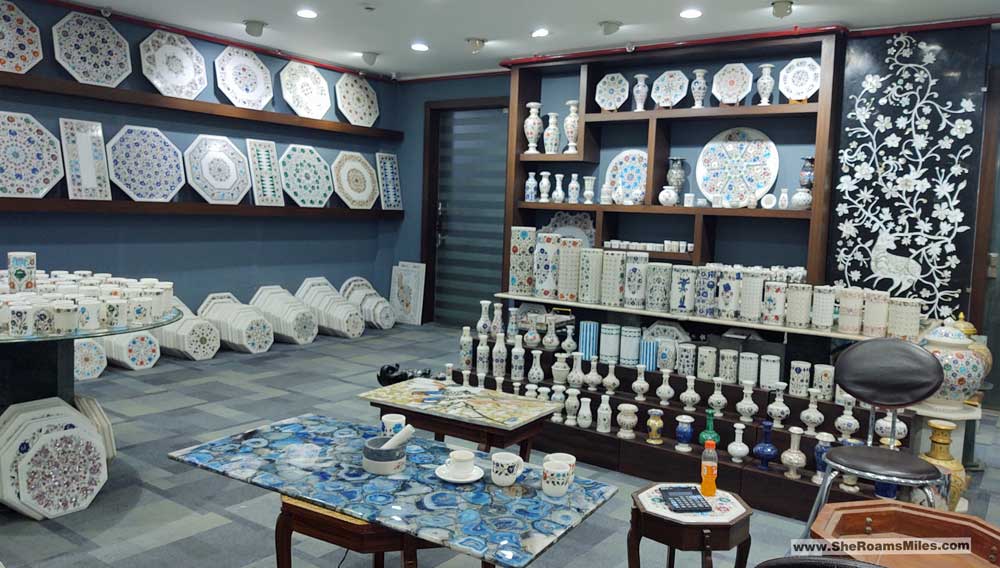
The Marble Emporiums and stores are known for creating some of the finest marble inlay artwork. These shops offer a wide range of products, from small souvenirs to large decorative pieces, including tabletops, and coasters, all crafted with intricate inlay work. At the stores you can watch artisans at work, learn about the traditional techniques used in marble inlay, and appreciate the skill involved in this traditional craft.
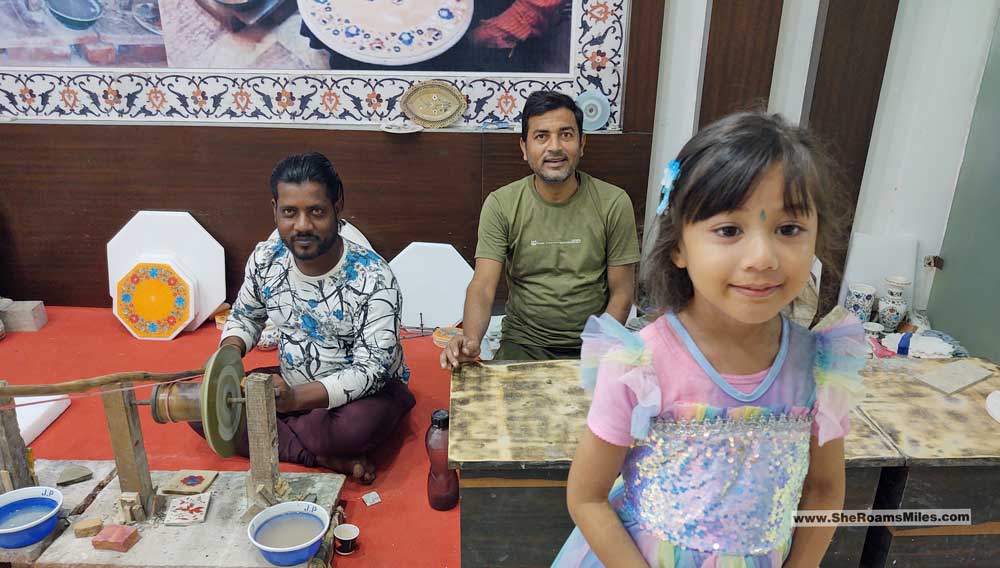
5. Leather Shops
Agra is also famous for its high-quality leather products. Shopping here is a must when exploring the best things to do in India.
6. Agra Fort
Once you’re done at the Taj Mahal, your guide will take you to Agra Fort, a UNESCO World Heritage Site, highlighting more top things to do in India.
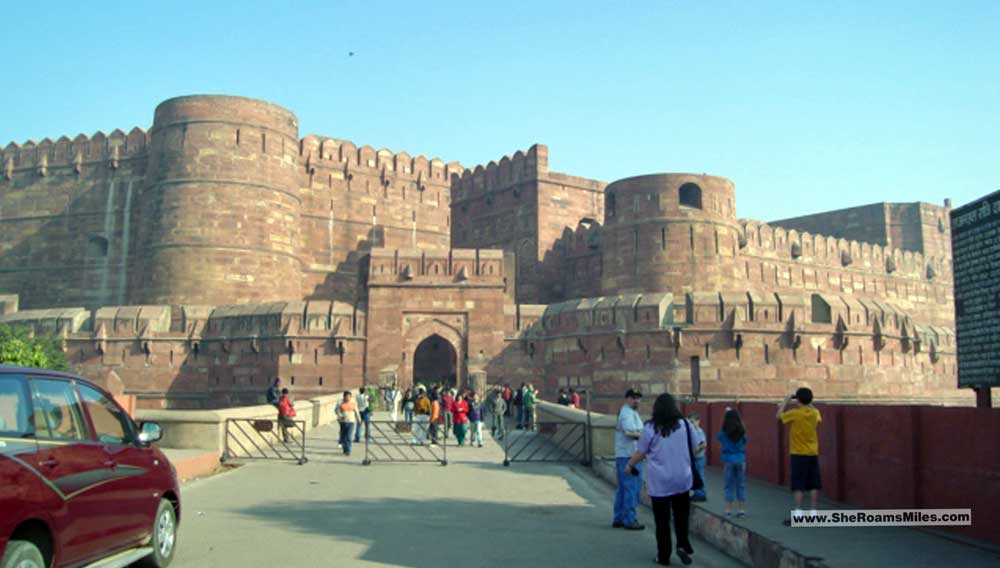
The Agra Fort, also known as the Red Fort of Agra, is a UNESCO World Heritage Site in Uttar Pradesh, India. It served as a royal residence and seat of government during the Mughal Empire and boasts a mix of Persian and Timurid architectural styles.
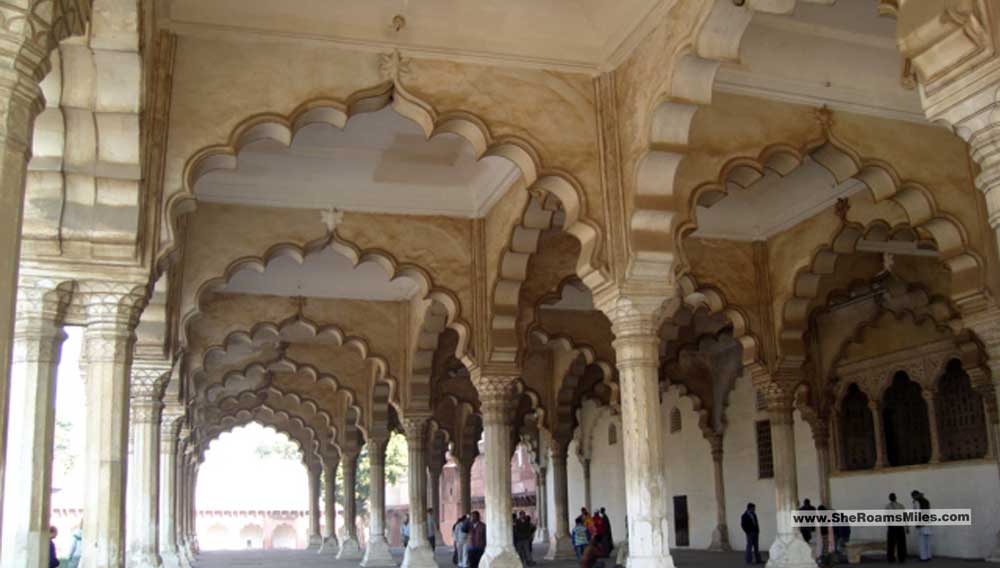
Its massive walls and strategic location on the Yamuna River showcase its significance as both a military stronghold and a regal palace. Built by various Mughal rulers, including Akbar the Great, Jihangir, Shah Jahan, and Aurangzeb, the fort is a vast museum of diverse building styles and tastes.
The Agra Fort is a very massive architecture spanning several square kilometers in area. Approximately 70% of Agra Fort is accessible to visitors.
7. Baby Taj
If you have more time, the guide may be able to bring you to the Baby Taj. The “Baby Taj,” also known as the Tomb of I’timād-ud-Daulah, is a beautiful Mughal mausoleum in Agra, India. It’s often considered a precursor to the Taj Mahal due to its intricate marble work and detailed inlay designs.
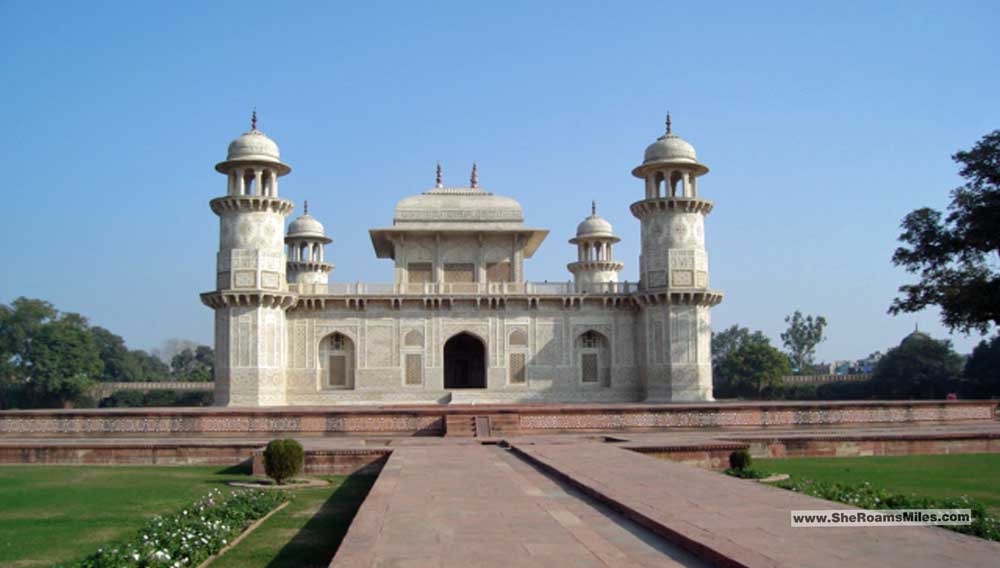
8. Mehtab Bagh
Mehtab Bagh, also known as the “Moonlight Garden,” is a stunning Mughal-era garden located in Agra, India. The garden was originally built by Emperor Babur in the 16th century, but it was Emperor Shah Jahan who rebuilt the garden to protect Taj Mahal from the abrasion of sand.
Mehtab Bagh has been carefully restored and now serves as a peaceful oasis for visitors to enjoy the serene ambiance, lush greenery, and reflective water features while admiring a mesmerizing view of the Taj Mahal from a unique perspective, making it a popular spot for photographers and travelers.
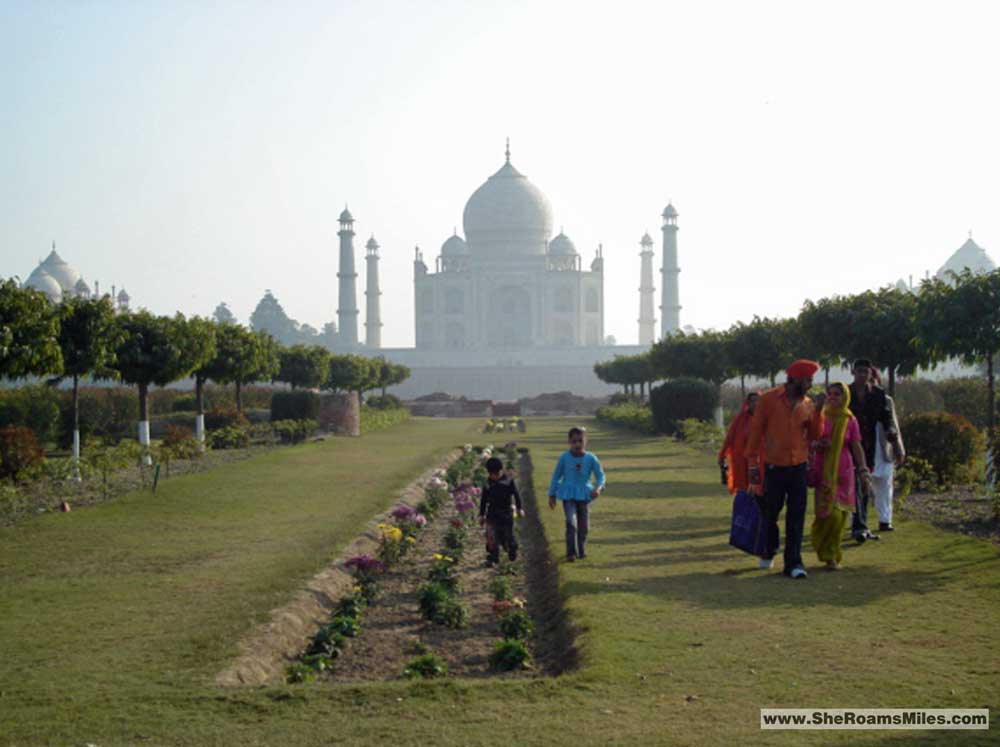
9. Fatehpur Sikri
Fatehpur Sikri, built by Mughal emperor Akbar in the late 16th century, is a grand city located just 40 kilometers from Agra. It was intended to be the capital of the Mughal Empire and a symbol of its greatness. Its stunning architecture, including the world’s largest gateway and a variety of religious structures, reflects Akbar’s strength, wisdom, and religious tolerance.
Despite being abandoned due to water scarcity, it continues to inspire visitors as a symbol of the Mughal Empire’s might and ambition, a source of pride for Indians and a marvel for travelers, showcasing India’s cultural diversity and religious harmony.
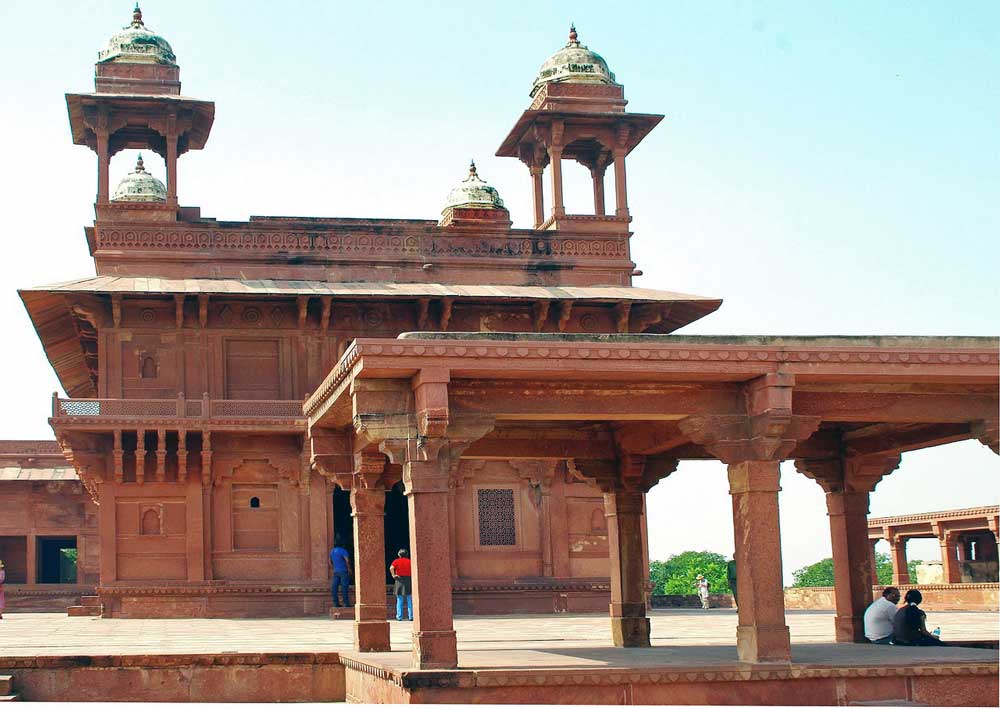
Where to Stay in Agra
Agra offers various accommodations to suit different preferences and budgets.
- Luxury: The Oberoi Amarvilas Agra
- Mid-range: ITC Mughal, A Luxury Collection Resort & Spa, Agra
- Budget: Taj Classic Agra
Going back to Delhi
After all the sightseeing and shopping, your private driver will drop off your guide in Agra and drive you back to Delhi. You would have a full day, and the guide would safely bring you back to your hotel at night after all the chaotic bumper to bumper traffic in Delhi.
Just imagine, your driver is like a superhero, skillfully dodging rickshaws, cows, and the occasional street vendor, all while keeping a calm and patient demeanor. By the time you reach your hotel, you’ll feel like you’ve just survived an epic adventure. I was happy of the service of the driver, his patience in traffic and for keeping us safe, so we gave him a generous tip. It feels good to make them happy.
Day 2: Exploring Old and New Delhi
On your second and last day in India, you will be on another private and exclusive tour. We used the tour below, and really liked their service. You still don’t have to rent a car to navigate the busy city to sightsee. Your driver will pick you up at your hotel.
One of the main reasons India has become a popular tourist destination is because of its rich cultural heritage. With a history dating back thousands of years, India boasts a plethora of ancient temples, monuments, and ruins that offer a glimpse into its past. Today we will mostly drive through notable ruins and interesting places and only explore the top attractions in Delhi.
10. Delhi Chalo Park
Delhi Chalo Park is a revitalization project in the heart of India’s capital, aiming to transform the green spaces behind the Red Fort into a Mughal Char Bagh. This effort is part of the larger Kartavya Path initiative, which seeks to provide recreational facilities similar to those at India Gate.
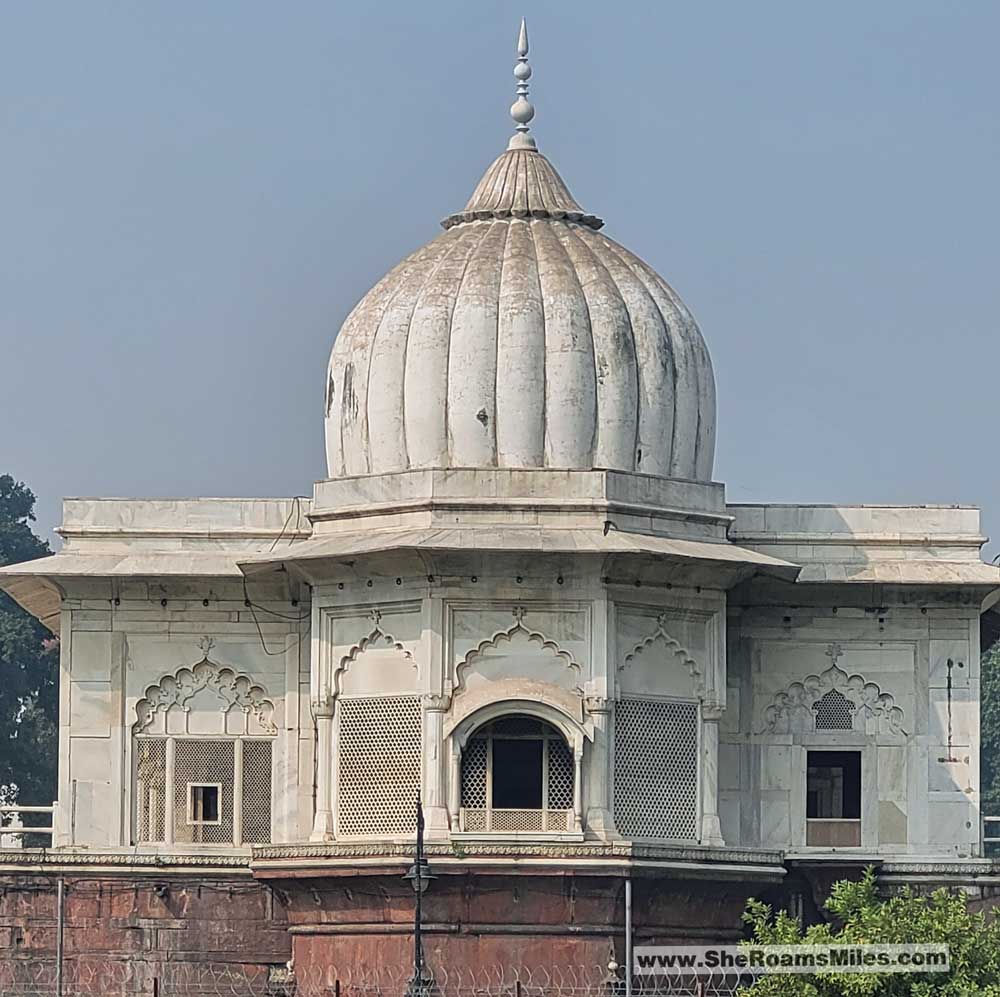
11. Delhi Red Fort
The Red Fort, also known as Lal Qila, is a symbol of India’s rich history. The fort’s red sandstone walls served as both a defense mechanism and a display of grandeur, and it continues to be a popular tourist attraction as a UNESCO World Heritage Site.
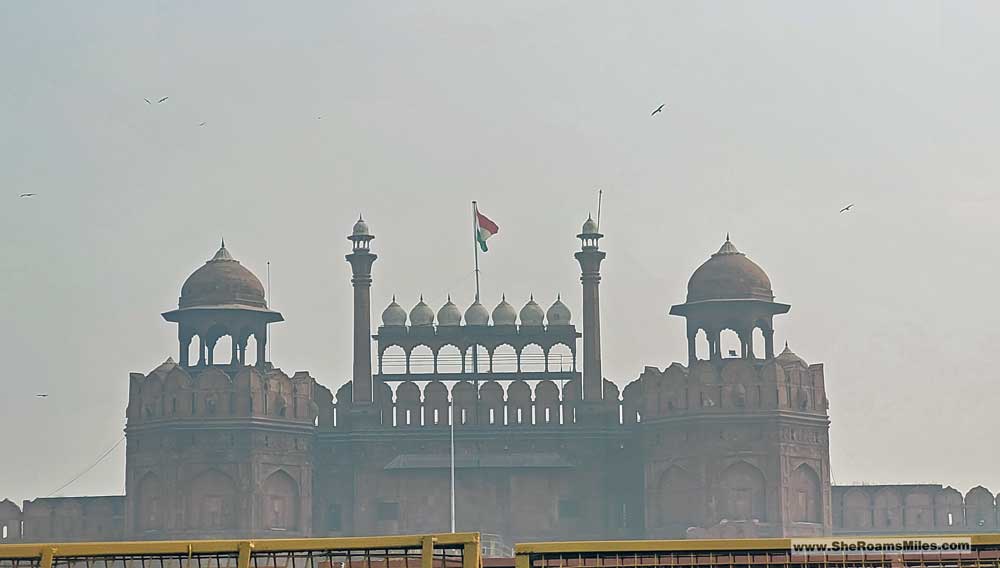
12. The Jama Masjid
The Jama Masjid is a highly respected mosque in Old Delhi, built by the Mughal Emperor Shah Jahan. It requires visitors to remove their shoes and wear conservative clothing, with the option to rent gowns for a small fee. Made of red sandstone and white marble, the mosque can accommodate up to 25,000 people and is a popular destination for religious and tourist activities.
The Jama Masjid is not only a place of religious significance but also a cultural symbol attracting many tourists, making it one of the essential things to do in India in 2 days.
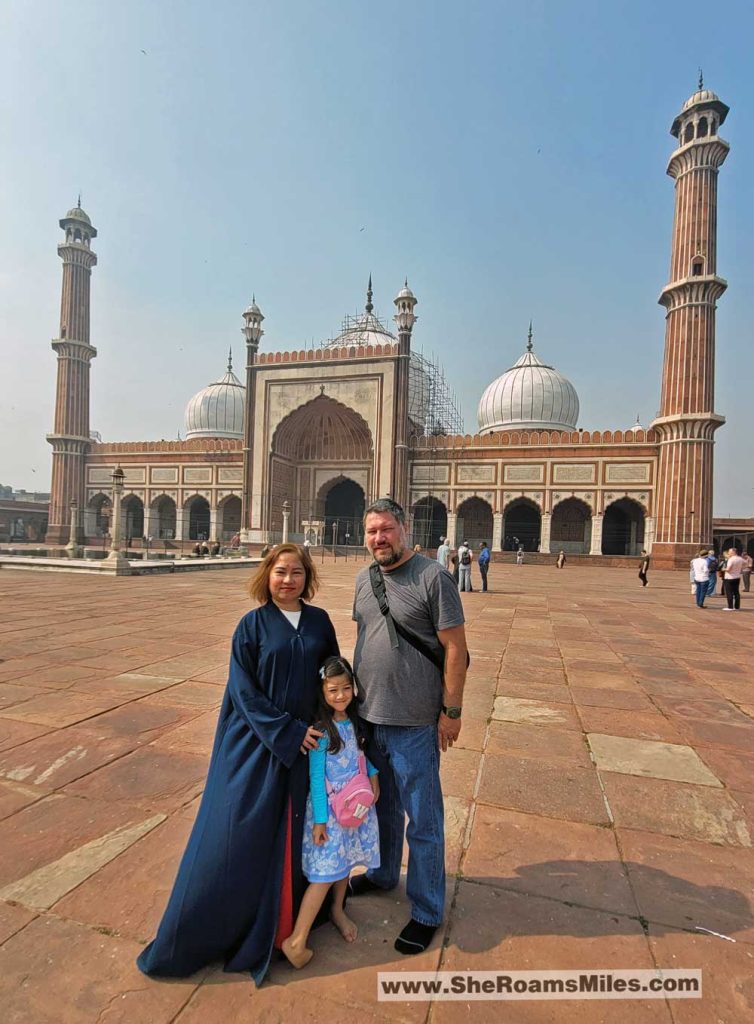
The Jama Masjid is a prominent mosque in Old Delhi known for its architectural grandeur. The Jama Masjid is not only a place of religious significance but also a cultural symbol attracting many tourists.
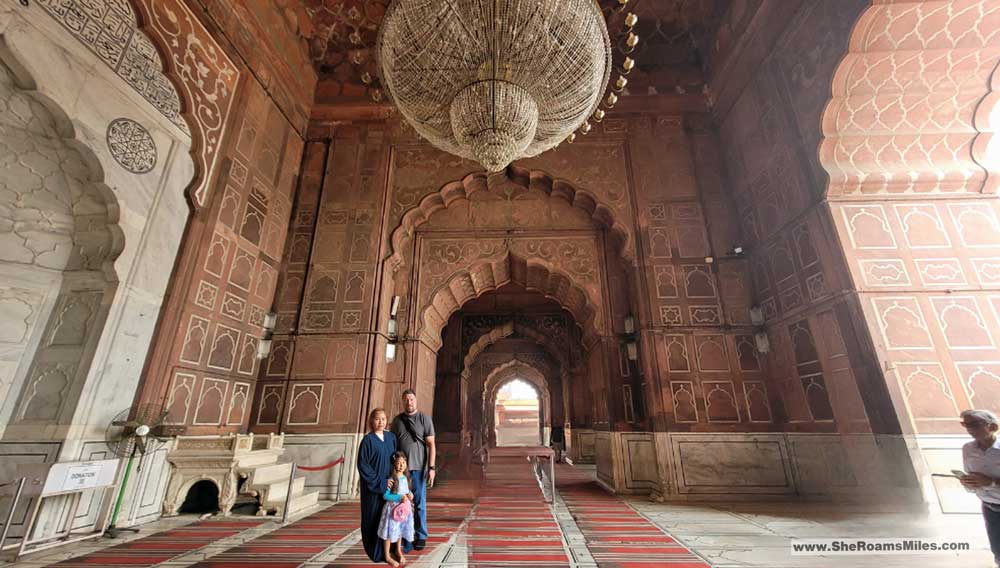
13. Riding Bicycle Rickshaw
From Jama Masjid, you would walk a block or two to ride a bicycle rickshaw. These human-powered vehicles offer an eco-friendly and efficient way to navigate the busy streets, especially in areas like Old Delhi. However, some may have mixed feelings about using them, especially when faced with the physical demands of riding in the chaotic traffic. This experience also highlights the positive impact of bicycle rickshaws in providing honest livelihoods for many people in Delhi.
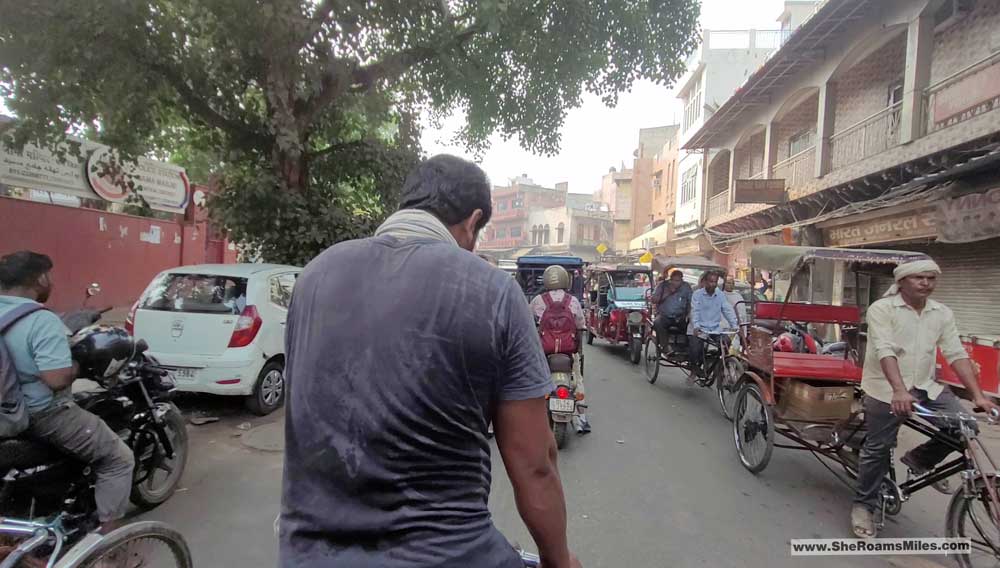
14. Khari Baoli
The bike rickshaw ride will bring you to Khari Baoli. Khari Baoli in Old Delhi is known as the largest wholesale spice market in Asia and was established in the 17th century. This bustling market offers a wide variety of spices, herbs, and dry fruits, from everyday staples to exotic varieties. Its vibrant atmosphere and aromatic alleys make it one of the must-visit things to do in India in 2 days.
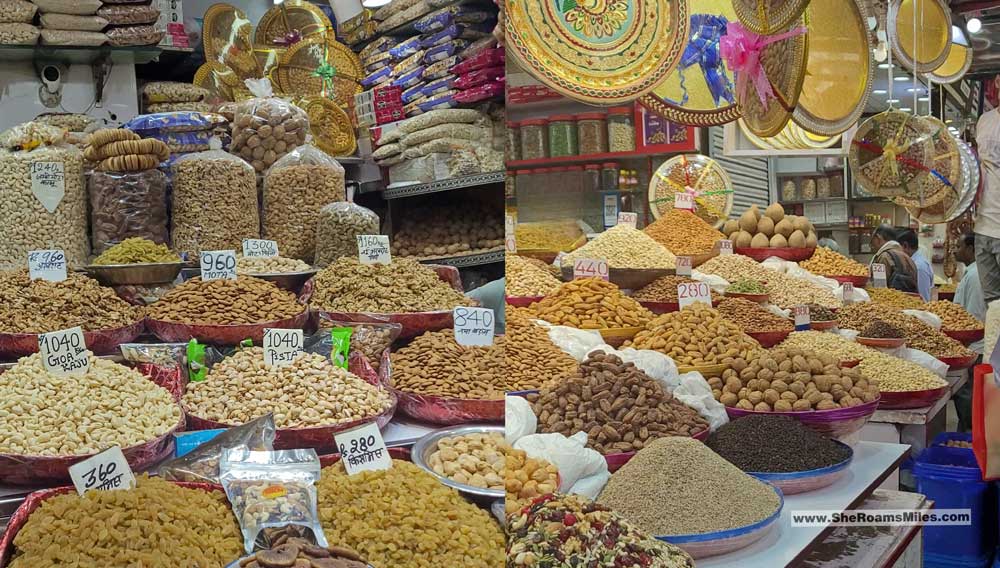
The market is not just a trading center but also a sensory delight for visitors with its vibrant atmosphere and aromatic alleys.
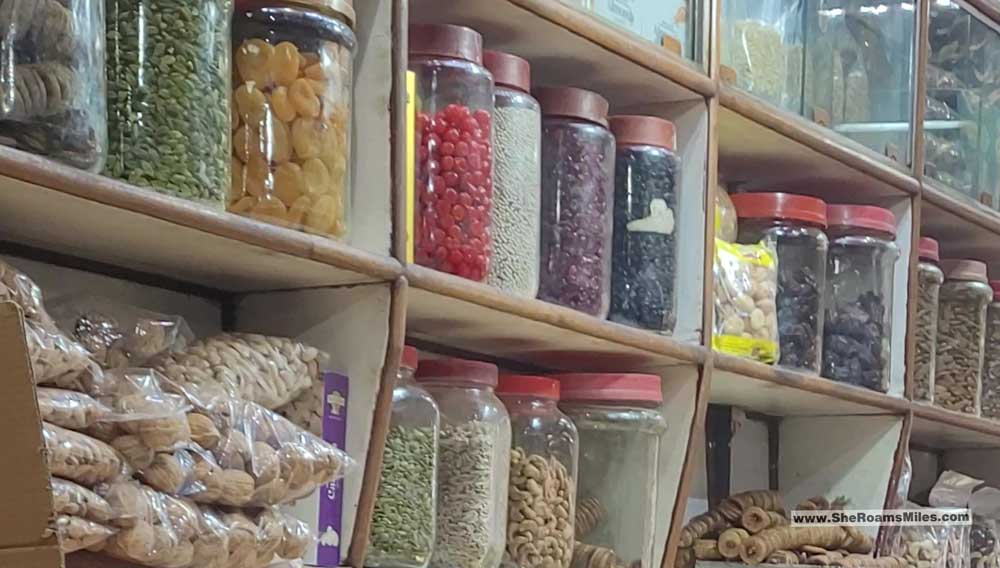
15. Rajghat
Raj Ghat in Delhi, India is a sacred memorial dedicated to Mahatma Gandhi, the Father of the Nation. It marks the spot where he was cremated in 1948 after his assassination.
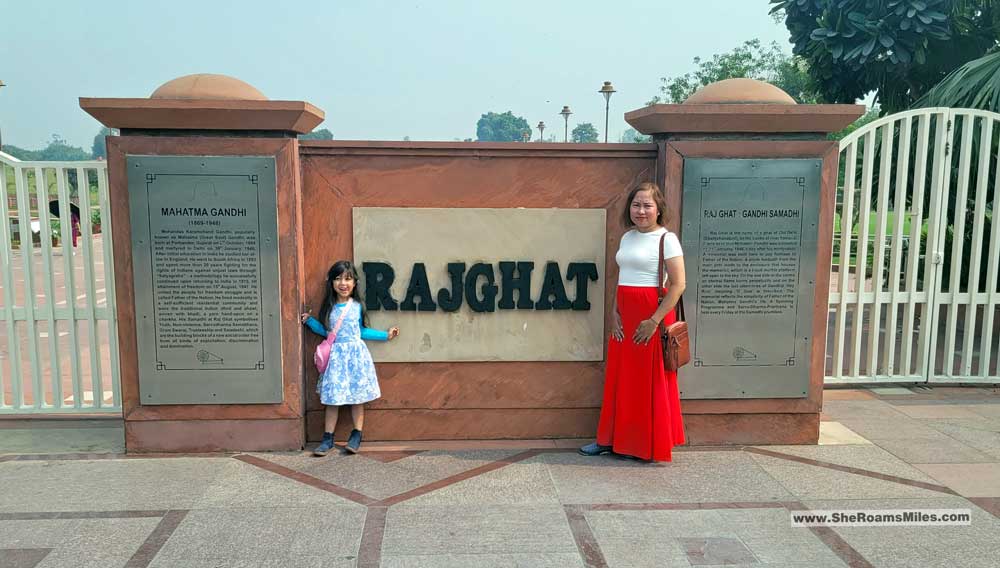
The Raj Ghat memorial in New Delhi, India is a simple but powerful tribute to Mahatma Gandhi. Surrounded by gardens and located on the banks of the Yamuna River, it reflects his legacy of simplicity and peace. Other Indian leaders are also honored at the complex. Visitors must remove their footwear before entering as a sign of respect.
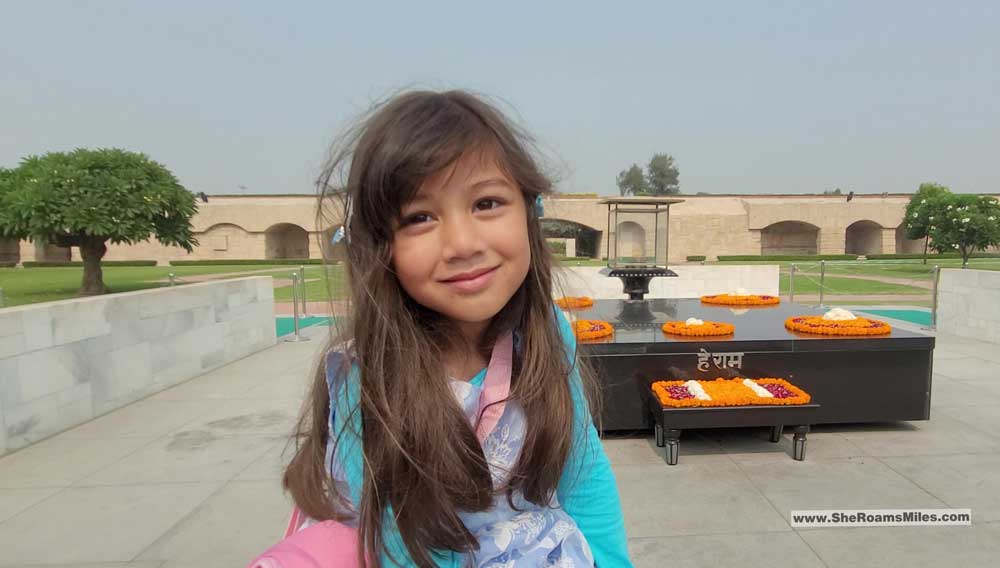
16. Ugrasen Ki Baoli
Agrasen Ki Baoli is a historical stepwell in New Delhi, believed to have been built during the Mahabharata era and later rebuilt in the 14th century. The stepwell showcases a blend of Persian and Indian architectural styles and has 108 steps, divided into three levels. It is open to visitors daily with no entry fee, making it a fascinating thing to do in India.
Agrasen Ki Baoli is a popular tourist attraction and has appeared in Bollywood films, including the blockbuster “PK” starring Aamir Khan.
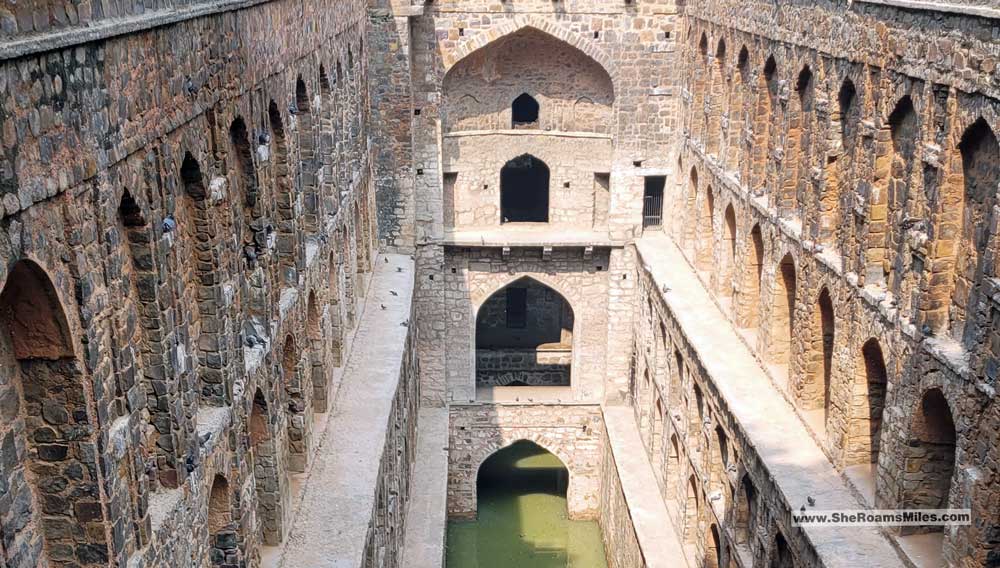
Ugrasen Ki Baoli stepwell offers a fascinating glimpse into ancient water conservation techniques and architectural styles. Please see this blog post Stepwells In Delhi | A Fascinating Ancient Water Conservation Technique for more details about stepwells, especially in Delhi.
17. Humayun’s Tomb
Humayun’s Tomb in Delhi, India, is a magnificent example of Mughal architecture and a UNESCO World Heritage Site. The tomb’s construction set a precedent for future Mughal structures. The site not only holds the tomb of Emperor Humayun but also other Mughal rulers and features stunning Persian-style gardens.
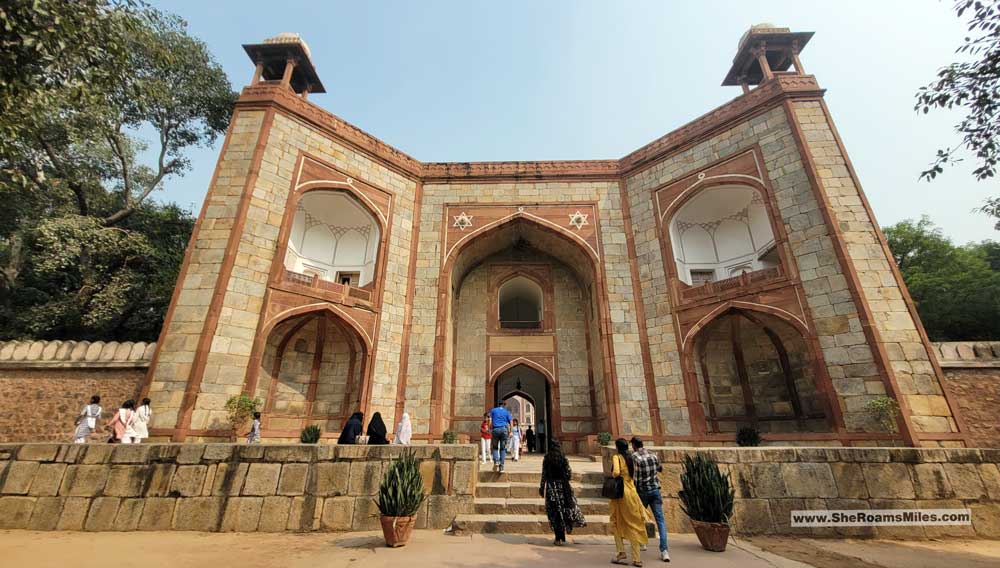
It is the first garden-tomb in India and influenced future Mughal structures, such as the Taj Mahal.
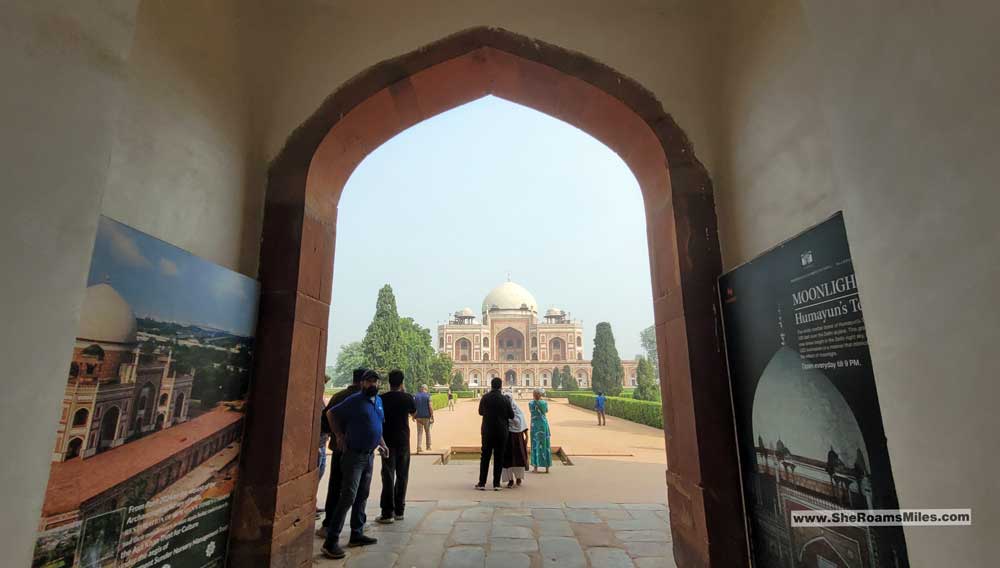
Its impressive architecture, surrounded by lush gardens and smaller monuments, has inspired many subsequent structures and is a must-visit for those interested in Indian history and culture.
I really liked it better and I think that it’s more beautiful than the Taj Mahal.
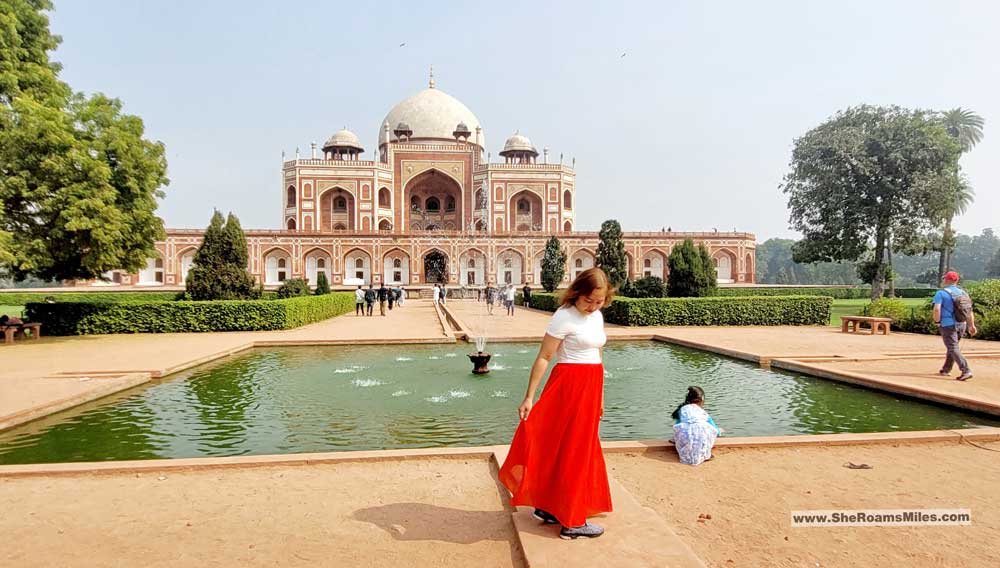
18. India Gate
India Gate, a symbol of honor and sacrifice, is a significant structure in New Delhi, India. The memorial, also known as the All India War Memorial, was built to commemorate the soldiers of the British Indian Army who lost their lives in World War I and the Third Anglo-Afghan War. Inspired by the Arc de Triomphe in Paris, India Gate is made up of a grand arch, a shallow domed bowl, and an eternal flame for the fallen soldiers. Apart from being a war memorial, India Gate is a popular destination for locals and tourists, who can enjoy picnics at a war memorial and evening walks in the surrounding area.
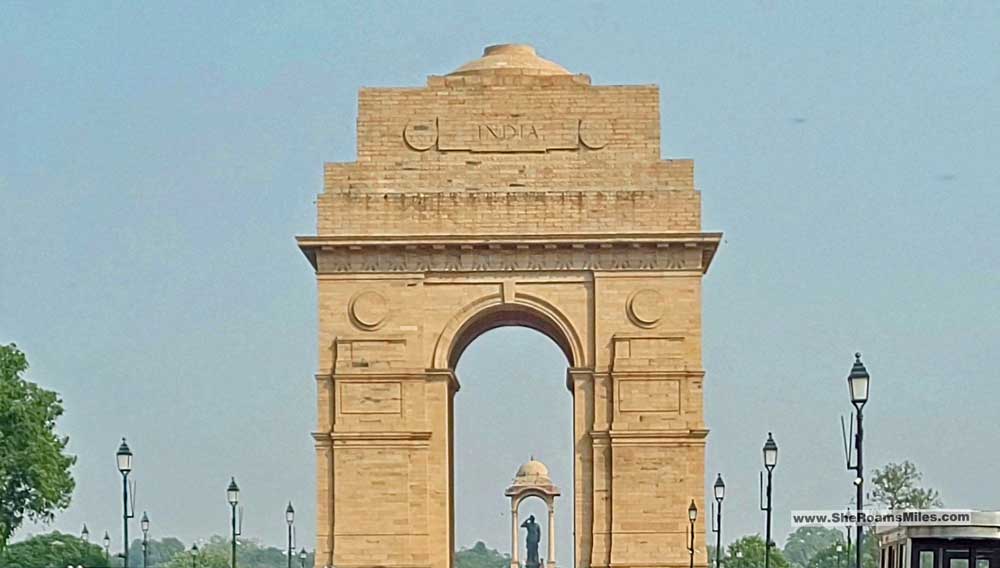
Your tour guide might instruct the driver to just pull over the side of the busy road to see this structure, but you can definitely request to stop by and take pictures.
19. Lotus Temple
The Lotus Temple, also known as the Bahá’í House of Worship, is a stunning architectural marvel in New Delhi, India. It has won numerous awards for its unique design, and symbolizes purity and peace. The temple is not only a place of worship but also a popular tourist attraction, open to all regardless of religion.
This place closes at 5:00 pm though, so if you get there a minute or so late, this would be about the best picture you could get. So make sure you get there early to be able to see and take picture of the whole structure.
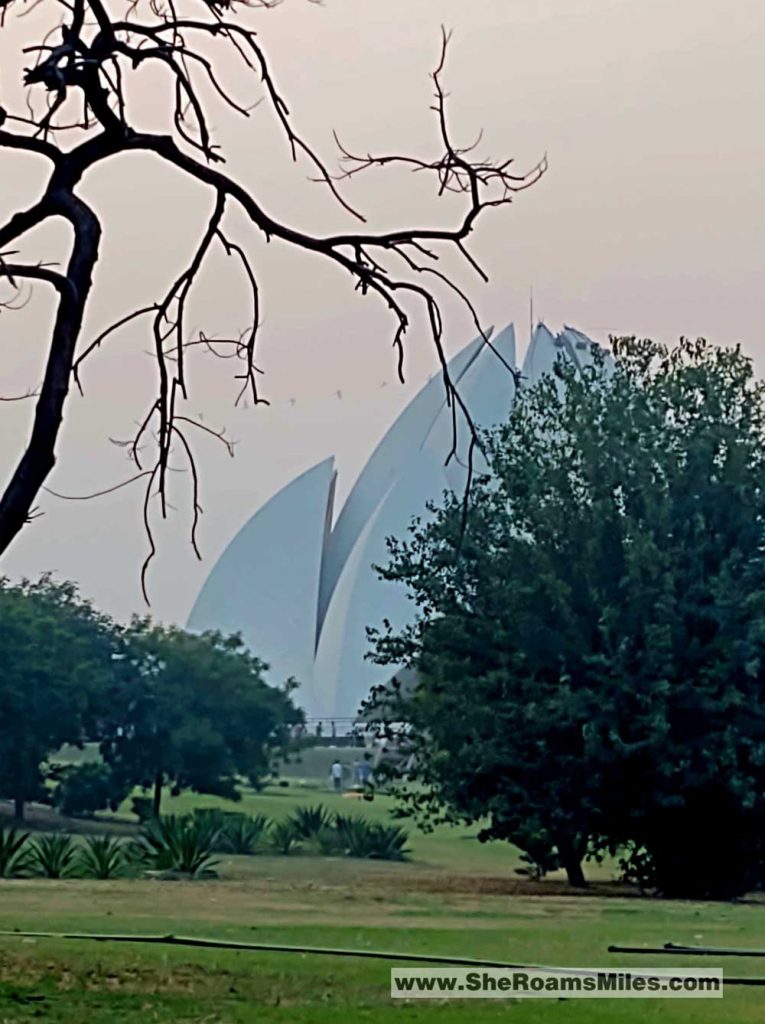
Back to the Hotel
You just had a full day visiting 10 places and experiences in Delhi! This was made possible and easy by having a knowledgeable tour guide and driver.
By this time, the driver will drop off your guide somewhere in Delhi and will proceed to navigate heavy Delhi traffic to drop you back to your hotel.
It would be about dark when you arrive back to your hotel. If you have arranged your luggage to be stored at the hotel and picked up when you get back, they would be about ready to transfer to the hotel shuttle back to the airport.
We got to the airport about 9 pm with plenty of time before our 1am flight.
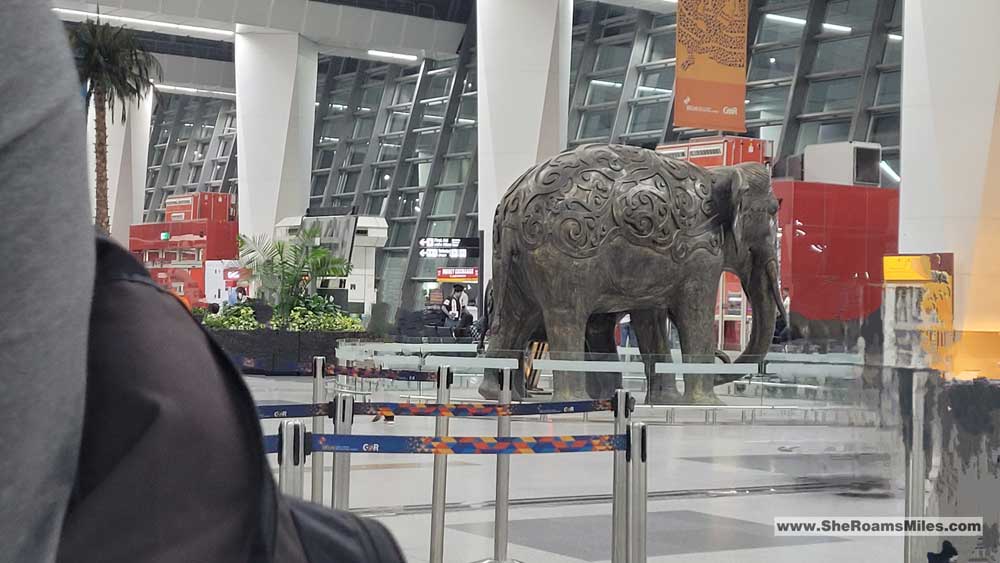
Be sure to have your itinerary or boarding pass evidence of your trip before getting in line to enter the airport. DEL airport has free Wi-Fi that you can use to pull up your itinerary in case you did not have it printed out. Overall, it was a smooth process.
Time Constraints of 2 Day Trip
The time constraints of a 2-day trip force us to prioritize and make the most of every moment. We are forced to leave behind the unnecessary and focus on the must-see and must-do activities. This not only saves us time but also helps us create a more well-rounded and meaningful itinerary. Instead of rushing from one attraction to another, we ware able to fully immerse ourselves in each experience. We were able to truly appreciate it.
But perhaps the most important aspect of a 2-day trip is the lesson it teaches us about making the most of what we have. In a society where we are constantly looking for the next big thing and always wanting more, a short trip reminds us to appreciate the present moment and find joy in the little things. It encourages us to slow down and truly experience the destination, rather than just ticking off items on a checklist.
Conclusion
In conclusion, India is a country full of rich culture, vibrant colors, and unique experiences. If you only have two days to explore, prioritize the must-see places such as the Taj Mahal, or the backwaters of Kerala. By following our tips on efficient travel planning and embracing the chaos of India, you can make the most out of your short adventure. As Mark Twain once said, “India is the cradle of the human race, the birthplace of human speech, the mother of history, the grandmother of legend, and the great-grandmother of tradition.” So pack your bags and embark on a journey to discover the beauty and wonder of India. And remember, even after you return home, the door to further discussions and future adventures in India will always remain open.

This was actually my third time in India. And if given another chance, I will definitely go back to this incredible country again.
Useful Info for Your India Trip
Delhi offers various accommodations to suit different preferences and budgets. Below you can find my picks for where to stay in New Delhi.
- Luxury: The Leela Palace New Delhi
- Mid-range: The LaLiT New Delhi
- Budget: Saltstayz Le Icon
Tourist Visa
Before you can start planning your trip, you have to check the visa requirements to enter India first. You can check it here. United States citizens are required to have visa to visit India. Nowadays, we can get e-visa where you quickly apply online. There is a small fee (about $25 at time of writing). You will get an email in about two days of visa decision, either granted or denied. Denial is a rare case, but overall, they want tourists to visit the country. The process was fast and smooth.
Driving in India
India is a right hand drive country. With this itinerary, you should not have to worry about dealing with driving in whatever side of the road. Traffic is Delhi is heavily congested. People blow their horns normally, where it would be offensive in other countries.
Safety in India
As of November 2024, the population of India is approximately 1.455 billion people. We stayed for only two full days in India. With this itinerary we felt safe and did not experience any concerns at all. One instance at Humayun’s Tomb where one Indian guy wanted to take video or photo of me, but you can just move away or gladly oblige, if not give a picture of their own screen.
Delhi Belly
Food poisoning can be a concern for tourists in India, often referred to as “Delhi Belly.” However, with some precautions, you can minimize the risk and enjoy your trip.
If you do get sick, stay hydrated, rest, and seek medical attention if necessary. Many travelers find that carrying a basic medical kit with rehydration salts and anti-diarrheal medication can be very helpful.
Best time to visit India
The best time to visit India largely depends on the regions you plan to explore. It also depends on the activities you wish to engage in. Generally, the most favorable time to visit is during the winter months, from December to early March.
We visited in late October and the weather was mild and pleasant across most parts of the country. It was ideal for sightseeing and outdoor activities. It did not rain on us.
The monsoon season, from June to September, brings heavy rains to most parts of India. This can disrupt travel plans but also offers a unique experience with lush landscapes and vibrant festivals.
Temperatures can be scorching especially in the summer months, so don’t forget to come prepared. Thankfully, most of the shops offer hats and umbrellas to provide some respite from the heat. Just be sure to have some Indian rupees or cash on hand. Many of the smaller shops may not accept cards.
Planning a trip to India?
Then you might want to take a look at all our other travel guides about India.
- 9 Unmissable Things To Do In Agra | Perfect 1 Day Itinerary
- 19 Best Things to Do in India | Ultimate 2 Days Itinerary
- 10 Epic Things To Do In New Delhi India in Just 1 Day
- The Stepwells In Delhi | A Fascinating Ancient Water Conservation Technique
Like this post? Save it on Pinterest!
